Sample 1
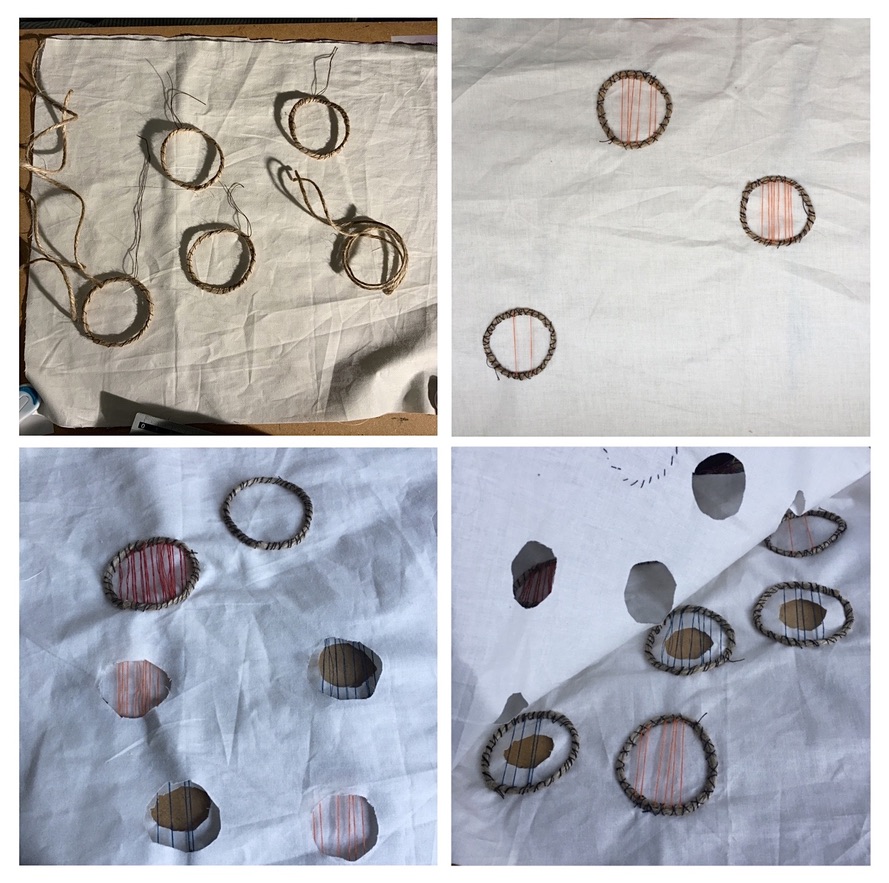
Image showing progress
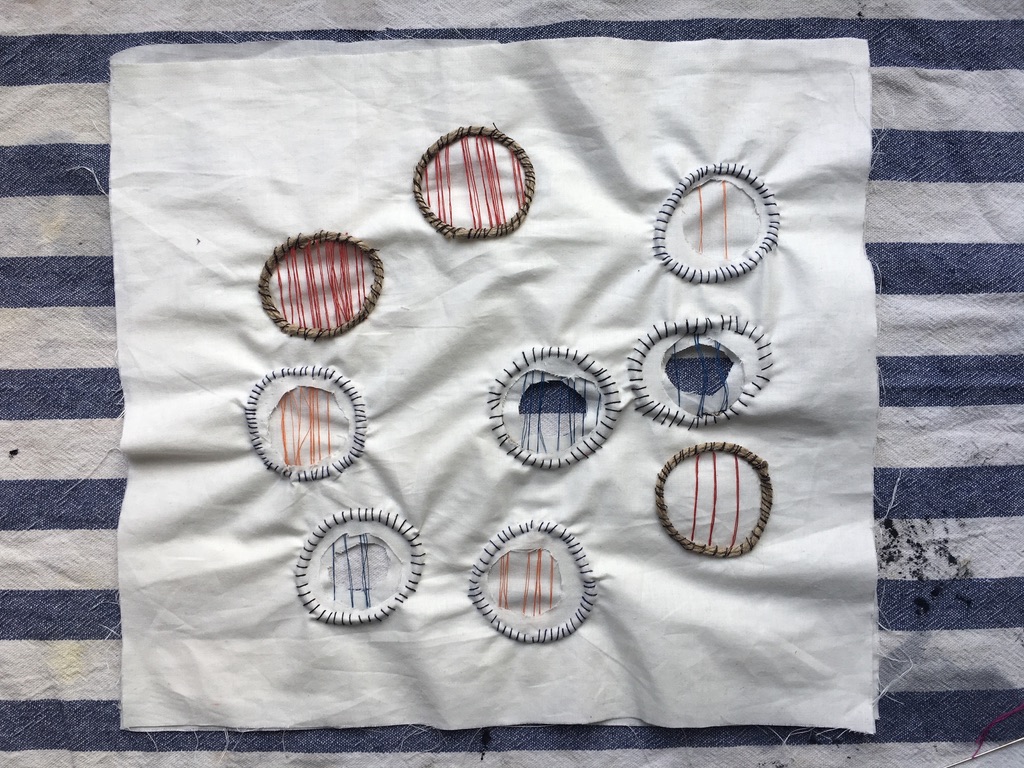
Finished sample exploring trapping and reverse applique
This sample focuses on the data collected for question 4. I wanted to highlight the difference in answers according to the 3 different age groups. This data however is not a fair representation as majority of the participants were teenagers and young adults compared to only 10 responses received from older participants. The sample explores the fabric manipulation technique called trapping. Firstly, each column of circles represents an age group starting from teenagers on the left and adults on the right. The top layer of fabric has 3 rope circles with red thread stitched through it represent those who answered ‘more’ from each age group. Each line of thread represent 1 person, so from the circle on the left to the right there are 16, 12 and 3 lines of thread. I repeated this process for the other circles on the second layer of fabric. The orange thread representing those who answered ‘less’ and the blue thread for those who’s answers remained ‘same’. I used a technique called reverse applique to expose the lines of thread in the circles on the bottom layer.
Sample 2

Sample photographed laying down, hanging above and from the front
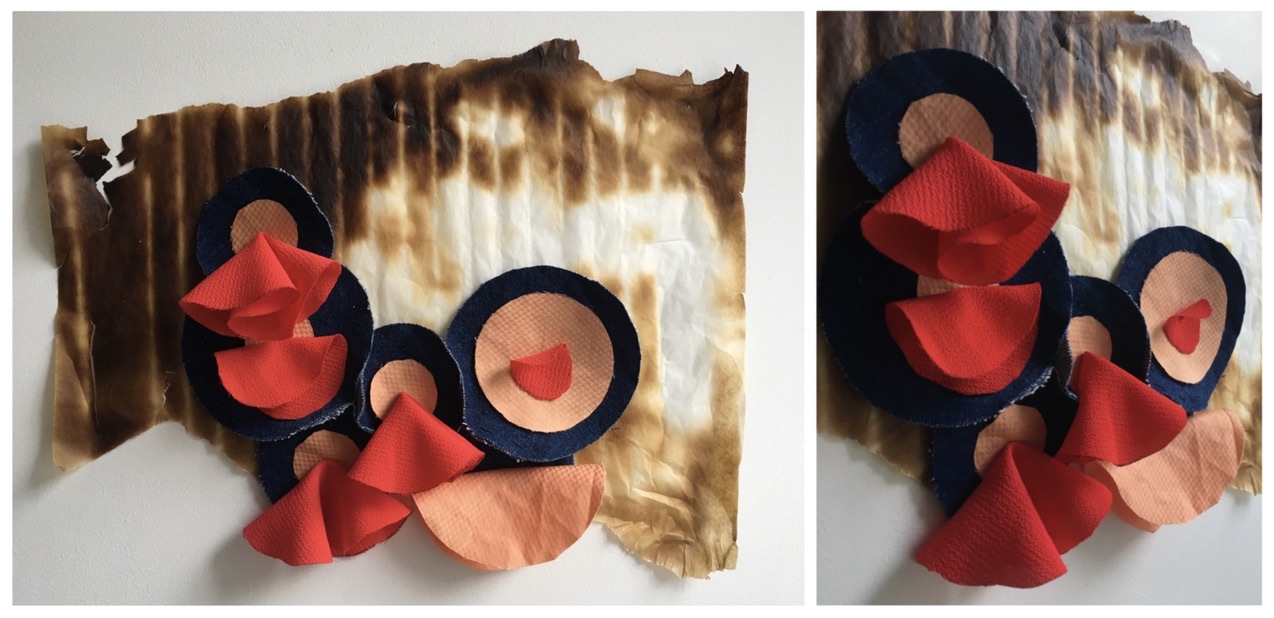
Finished sample
While experimenting with fabric manipulation techniques I attempted to create ruffles using fabrics such as denim, cotton and polyester as I was curious to see how the material and thickness of each fabric and the size of the cutout circles would cause them to fall. Each set of 3 circles layered on top of each other represent a question. For this sample I based the sizes of my circle cut outs on the answers received for questions 1-6. the red polyester as my top layer representing those who answered ‘more’, orange cotton underneath for those who answered ‘less’ and the blue Demin at the base for those who remained unchanged. Each circle size varying from large, medium and small were dependent on the total number of those who answered the same. I used a French knot to sew each layer together and then overlapped them to form ruffles. This piece was then stitched onto baking paper and blue tacked for extra support. The way the fabric falls over is interesting as it looks like some kind of fungal growth or a cluster of spores or mold coming out of the baking paper.
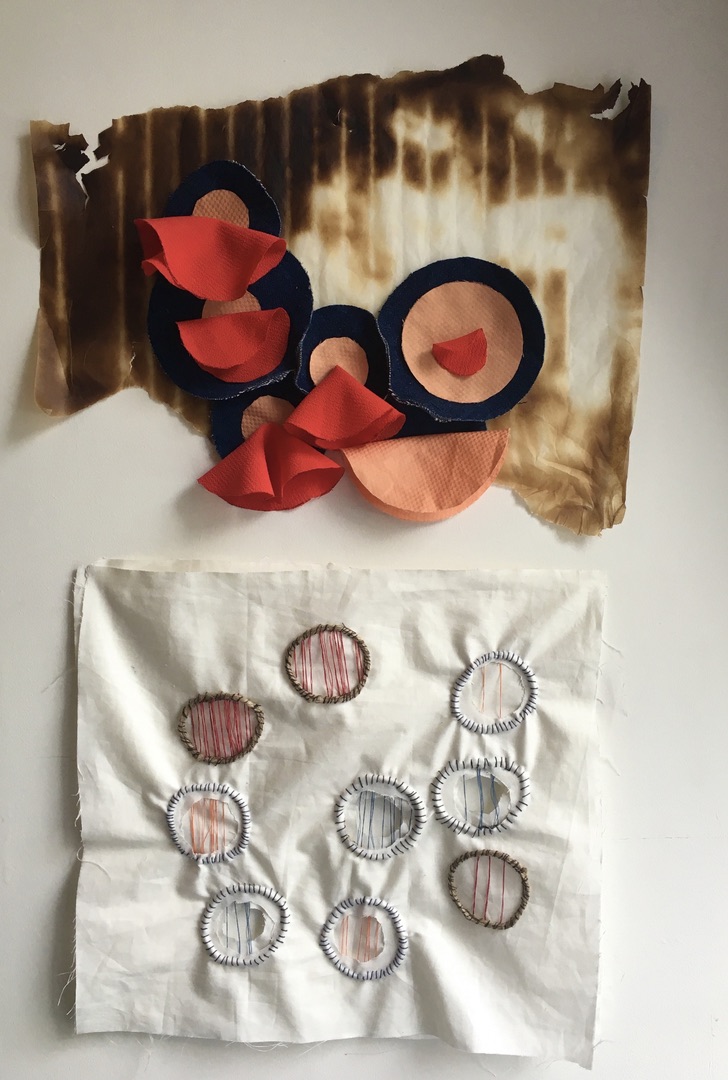
Image showing sample 1 and 2
Sample 3
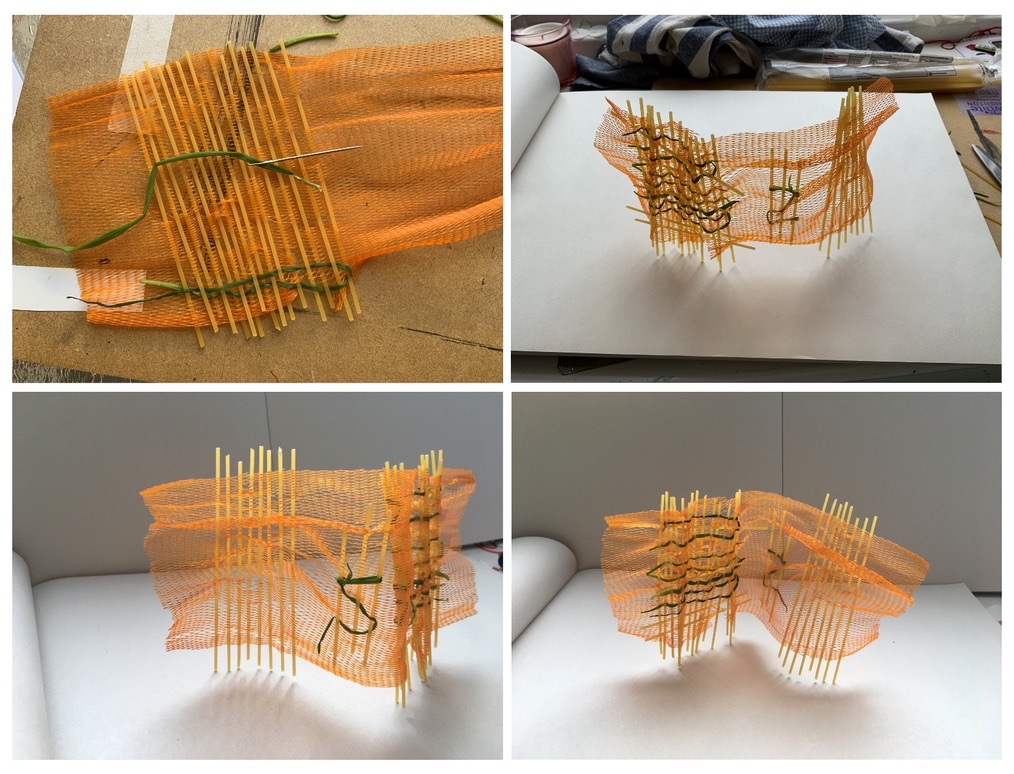
Weaving sample

This sample was created in response to data collected in question 1 for young adults. As the question asks whether the participants cooked more, less or the same amount during lockdown as they do on average. I incorporated food items such as spaghetti, chives and mesh onion packaging to link my sample back to the question. On the left I have weaved chives and spaghetti through the mesh to represent those (16) who have cooked more over lockdown. In the middle I weaved the spaghetti and chives on the back of the mesh to represent those (3) who have cooked less and on the right, the plain spaghetti weaved back in the front represents those (8) who’s cooking habits remain unchanged.
Sample 4

Image showing sample progress
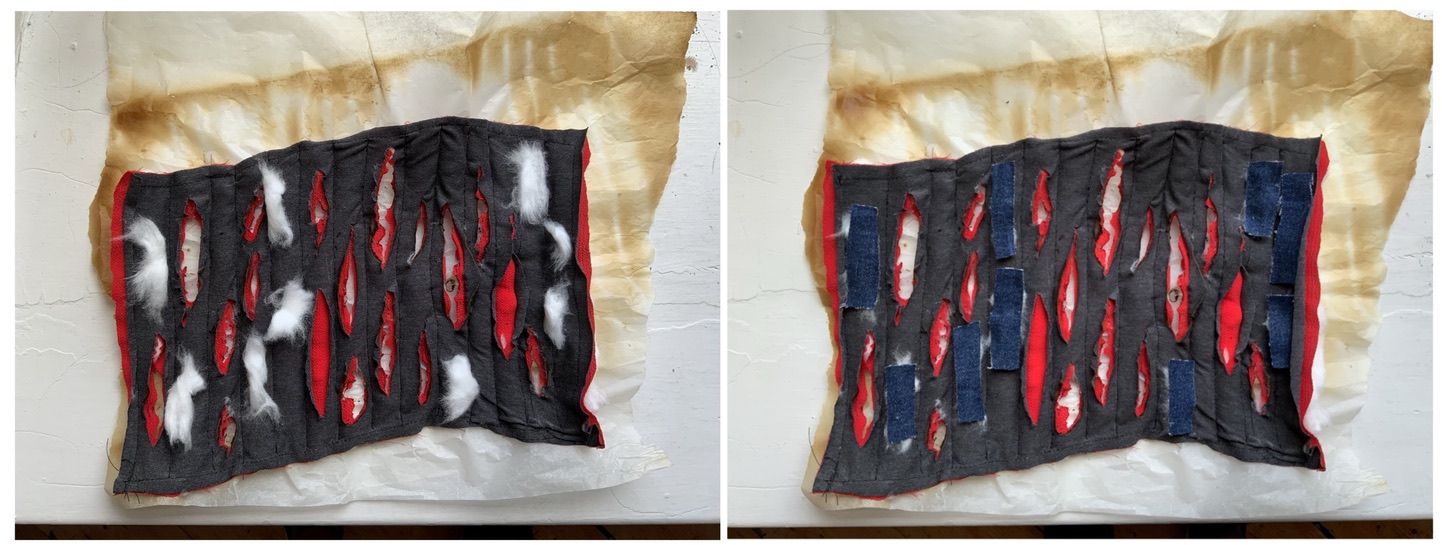
Image showing sample progress and finished sample
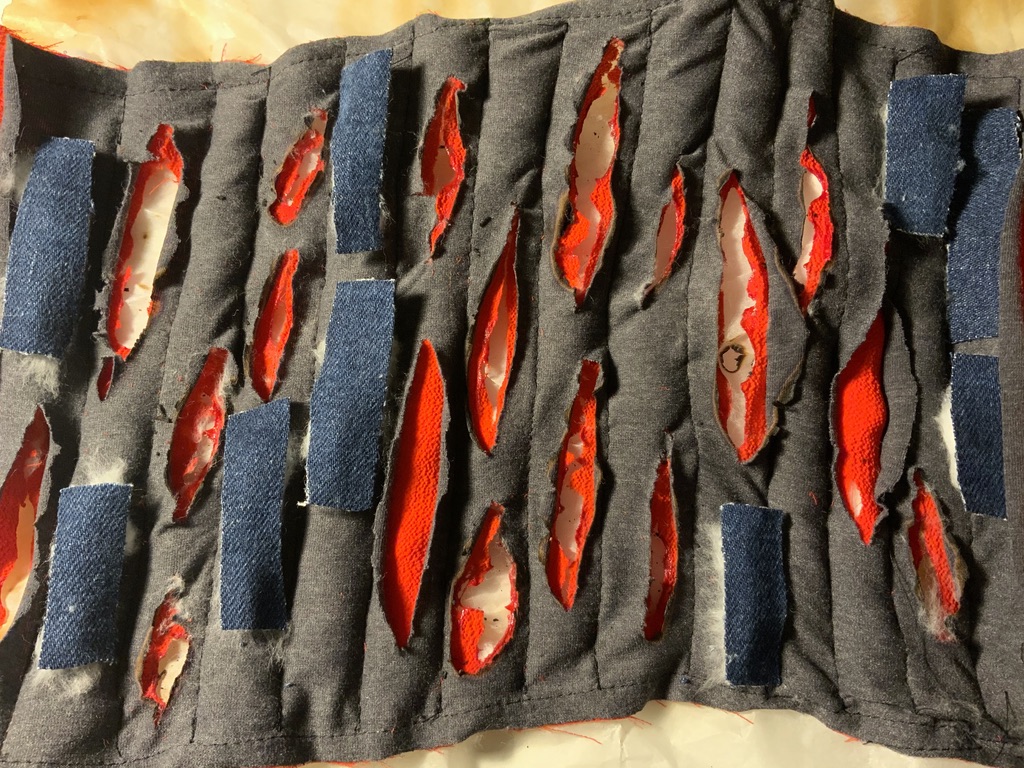
Close up of sample
This sample is inspired by work of designer Jilli Blackwood. A photo of one of her pieces is included in my designer research. I was really drawn to her use of texture and I wanted to incorporate this in one of my samples. This piece represents data collected from question 14 for young adults.
The top layer of fabric is made of t-shirt material, the second layer is a synthetic fabric and the base layer is baking paper. The slits in the fabric which reveal the base layer represent the young adults who started cooking ‘more’ for others during lockdown. The slits revealing just the red, synthetic fabric represent those who answered ‘less’ and the denim on top represent those who answered ‘same’. I used a sewing machine to sew this piece together and used the trapunto technique to elevate the fabric to make the slits more prominent also used heat as a fabric manipulation technique for the same reason


lrichar3
Well laid out post. The use of the sequential images to describe the process of construction works really well. This post also demonstrates your confidence as the project progressed. the last sample is interesting in it composition and use of materials and mixed techniques. Keep allowing the data to push you in different unexpected directions. You have begun to combine weaving/darning techniques in sample 1…have confidence to push unexpected combinations. This combination in particular has excellent potential for future development.